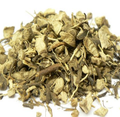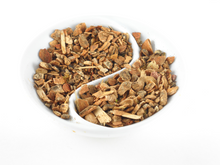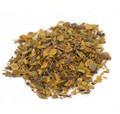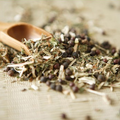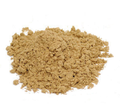 Loading... Please wait...
Loading... Please wait...- Home
- Bulk Herbs
- Herbs (C)
- Cramp Bark
Product Description
Cramp Bark C/S
Also Known As - Viburrun Opulus
Wild Crafted USA
Overview - In North America you will find this 8 to 12 foot deciduous shrub in much of woodlands of the eastern United States. Viburnum is known as Kalyna in the Ukraine and is very much a part of their folk tradition pictured in embroidery work, mentioned in folk songs, and in Slavic mythology. One of the earliest documented examples of adulteration in botanical medicine in the US occurred with this plant. The bark was made official in the U.S. Pharmacopeia in 1894 and was included in the National Formulary in 1916. Widespread adulteration by mountain maple (Acer spicatum) and other Viburnum species led to confusion about the correct source plant. A later review surveyed the botanical, chemical, and pharmacological differences between black haw and cramp bark.
Medicinal - Historically the eclectic physicians recommended it to support the body's adaptation associated with menstruation. It has also been found to be useful for the common complaints associated with normal menstrual cycles. As the plant name suggests, it can be used exactly for just that purpose! The bark contains methyl salicylate which is a weak acting precursor to the salicylic acid that is used in aspirin, but much less irritating to the gastric mucosa albeit weaker in its action. Also traditionally used to help relax bronchial and respiratory muscle spasms associated with cough. In large doses, it may help leg cramps, muscle spasms and neck pain.
Active Constituents - Coumarin, Salicin, flavonoids and triterpenes such as ursolic acid, hydroxycoumarins, caffeic acid derivatives, phenolcarboxylic acids, and tannins.
Herbs to Combine/Supplement - Combining cramp bark with valerian and ginger is helpful for people who get cold extremities in the winter.
Parts Used - Cramp bark is peeled from the root and dried or made into a tincture.
Precautions - Cramp bark does no harm in normal doses, however do not use if you are sensitive to aspirin. Side effects may include vomiting, nausea and diarrhea when large doses are taken of 60 drops or more per hour. While the fruit is edible in small quantities, it is mildly toxic and consuming large amounts may cause diarrhea or vomiting.
Preparation - The usual dosage for tincture is 15 to 30 drops an hour for acute muscle spasm. For pain during menstruation, take cramp bark frequently for the best results. Begin with ½ a dropperful every half hour until you notice an effect, then change the dose to every 1 to 3 hours. Reduce the dose as the symptoms subside. If your cycles are regular, you can begin taking the tincture 3 to 4 times a day before the cramps begin. Be careful to only use when you need it.
- For a decoction of the dried root bark, put 2 teaspoons of the cramp bark into a cup of boiling water. Simmer for 10 to 15 minutes. Drink this decoction while hot three times per day.
Disclaimer - These products are not intended to diagnose, treat cure or prevent any disease. Reviews are not intended as a substitute for appropriate medical care or the advice of a physician or another medical professional. Actual results may vary among users. Mountain Maus Remedies LLC makes no warranty or representation, expressed or implied, as to the accuracy or validity of the information contributed by outside product review submissions, and assumes no responsibility or liability regarding the use of such information. The information and statements regarding the dietary supplements have not been evaluated by the Food and Drug Administration. If you have a medical condition or disease, please talk to your health care provider. If you are currently taking a prescription medication, you should work with your health care provider before discontinuing any drug or altering any drug regimen, including augmenting your regimen with any herb or dietary supplements. Do not attempt to self-diagnose any disease or ailment based on the reviews and do not use the information contained herein for diagnosing or treating a health problem or disease. Proper medical care is critical to good health. If you have a health concern or suspect you have an undiagnosed sign or symptom, please consult a physician or health care practitioner.


